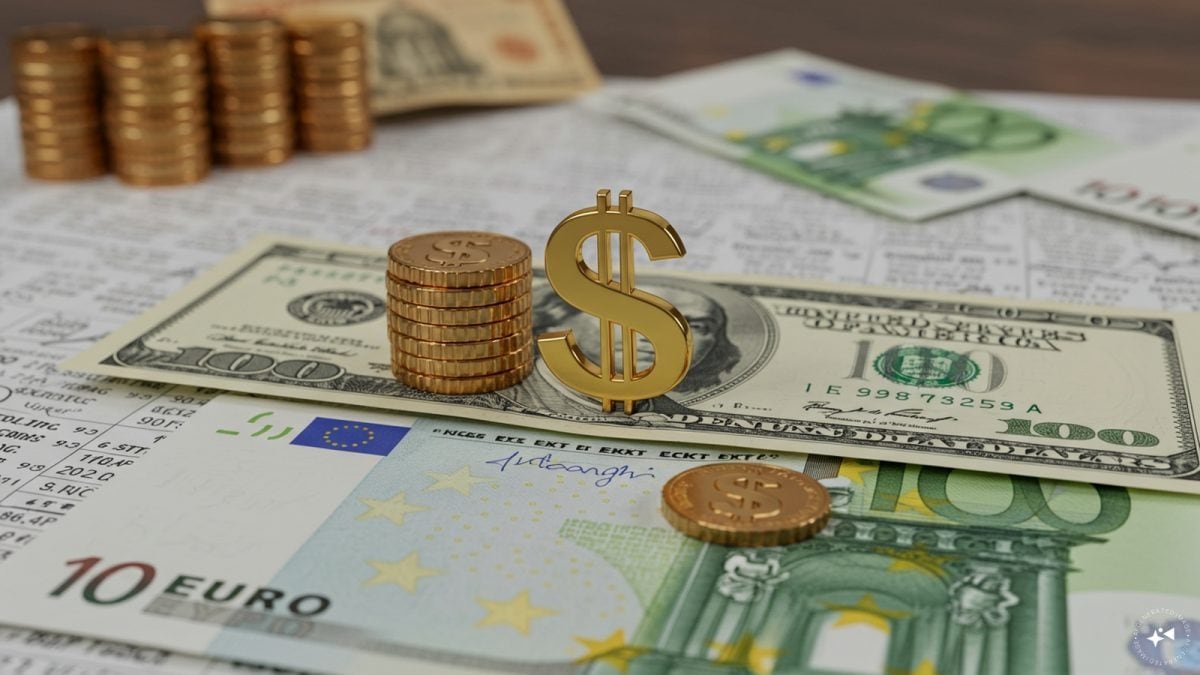In the first six months of 2025, the US dollar has suffered its steepest first-half plunge in over half a century, falling more than 10.4 per cent according to the US Dollar Index (DXY) — a benchmark that measures the greenback against a basket of major currencies.
The drop marks the dollar’s worst start to a calendar year since 1973, when the collapse of the Bretton Woods system ushered in a new era of floating exchange rates, the Financial Times reported. From a 52-week high of 110, the DXY has tumbled to below 97, a 13 per cent drop that reflects a broad shift in global sentiment toward US assets and policy credibility.
Economists and strategists have pointed to a specific culprit behind the dollar’s dramatic slide, which is, the Trump administration’s unpredictable and aggressive economic approach. Donald Trump’s return to power has been accompanied by a renewed push for “reciprocal” tariffs, but in practice, this has materialised as a stop-start trade war that has rattled investors. The Atlantic reported that Trump’s abrupt 90-day pause on global tariffs following a brief but chaotic implementation did little to repair the damage already done to global financial stability.
Francesco Pesole, a strategist at ING, referred to the dollar as the “whipping boy of Trump 2.0’s erratic policies,” reflecting how deeply investor trust has been shaken, the Irish Times said in a report. The confusion around trade policies, coupled with confrontational rhetoric toward the Federal Reserve and escalating fiscal risks, has transformed the dollar from a traditional safe haven into a symbol of instability.
At the heart of growing unease is Trump’s signature legislative push: the so-called “One Big Beautiful Bill,” a sweeping tax and spending package currently under debate in the Senate. The Economic Times said that analysts warn that the bill, which includes extended tax cuts and major increases in military and infrastructure spending, could add over $3 trillion to the national debt over the next decade.
Vishnu Varathan, head of macro research at Mizuho Asia, noted that the greenback is being weighed down by growing fears of an unsustainable US debt path, calling the bill a key driver of the “Sell America” narrative that is driving capital away from US assets, according to a Business Insider report. The nonpartisan Congressional Budget Office has projected a $3.3 trillion increase in deficits over 10 years if the bill passes, pushing total federal debt past $36 trillion.
One of the most alarming indicators of shifting sentiment is the sell-off in US Treasuries, long considered the safest asset in global markets. Normally, geopolitical or market turmoil drives investors toward Treasury bonds. But this time, as reported by The Atlantic, the opposite happened. Investors fled Treasuries en masse during the initial phase of Trump’s tariff announcements, causing yields to spike sharply. This reversal signals that confidence in Washington’s commitment to repay its debts and the broader soundness of US governance may be deteriorating.
Adam Tooze, economic historian and author of Crashed, suggested that the situation bears ominous similarities to the 2008 financial crisis, with the key difference being that this time the distress may stem directly from government policy rather than systemic banking risk, The Atlantic said.
As the dollar sinks, global capital is finding refuge elsewhere, most notably in the eurozone. Contrary to widespread forecasts of euro-dollar parity, the euro has surged by 13 per cent in 2025, surpassing $1.17 by midyear. This surge is not just a reflection of the dollar’s weakness but also the euro’s newfound strength. It also reflects the shifting fiscal policies in Europe. In Germany, for instance, a constitutional amendment now allows massive off-budget spending for infrastructure and defence, providing a powerful stimulus to the eurozone economy, Euronews reported.
According to analysts at Euronews, this fiscal turnaround, combined with the European Central Bank’s cautious approach to rate cuts and political instability in the US has made euro-denominated assets more attractive to global investors. German government bonds have emerged as a new safe haven displacing treasuries in some international portfolios.
The dollar’s slide also reflects broader market volatility and the growing perception that the Federal Reserve is being cornered by political pressures. Jerome Powell, chair of the Fed, has maintained that interest rate cuts are premature due to persistent inflation risks, particularly those stemming from Trump’s tariff and fiscal policies. But futures markets are pricing in five quarter-point cuts by the end of 2026, the Financial Times said.
Yet the Fed’s ability to act independently is increasingly being questioned. Trump’s public clashes with Powell and repeated demands for easier monetary policy have created an atmosphere of uncertainty about whether the central bank can fulfill its dual mandate, especially in the face of simultaneous recessionary and inflationary pressures. Even if the dollar’s reserve status remains intact, there can still be a substantial weakening of the currency when investors begin hedging their exposure en masse, the Irish Times said in a report.
The dollar’s weakness is not occurring in isolation. Asian currencies such as the Japanese yen have also made significant gains, with the yen up 9.3 per cent year-to-date, reflecting a broader reevaluation of currency risk amid geopolitical and fiscal instability in the US, the Business Insider said. In emerging markets, even currencies traditionally tied to the dollar, like the Indian rupee, are shifting more closely in line with the euro and other stronger alternatives.
Sami Pepin, a strategist at Lombard Odier, told Business Insider that the current environment doesn’t represent a wholesale dumping of US assets, but rather a strategic hedging against US policy unpredictability. Investors, he suggested, are opting to remain invested in US equities and bonds while shorting the dollar as a form of insurance against further shocks.
Although no immediate threat exists to the dollar’s dominant role in global finance, recent developments have raised rare and serious doubts. Central banks and sovereign wealth funds, long reliant on dollar-denominated assets, are increasingly looking to diversify. Gold has hit record highs in 2025, largely due to continued buying by central banks concerned about US fiscal sustainability and dollar depreciation.
The structural implications of these shifts could be long-lasting. If more nations begin settling trade in alternative currencies and more institutions adopt hedging strategies against the dollar, the global financial architecture that has supported US economic dominance for decades may begin to erode.
The dollar’s worst first-half performance in more than 50 years reflects more than just a slump in currency markets. It signals a deeper crisis of confidence in American economic management under Trump’s second presidency. With erratic trade policy, ballooning debt and rising questions over the Federal Reserve’s independence, the pillars that once made the dollar a reliable safe haven are showing visible cracks.
While markets have not yet fully unravelled, the flight to the euro, German bonds and other alternatives suggests that global investors are preparing for a long period of uncertainty. Whether the dollar stabilises in the second half of the year may depend less on economic fundamentals and more on whether Washington can restore credibility, something that, for now, remains deeply in question.
is on YouTube
Copyright @ 2024. Firstpost – All Rights Reserved
Trump policies send dollar crashing to worst start since 1973, tumbles 10% in first half – Firstpost



